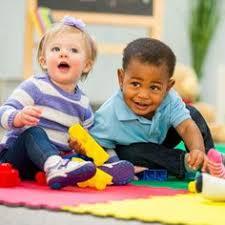In the journey of parenting, one of the most profound responsibilities is nurturing your child’s emotional development. It’s a path filled with both challenges and triumphs, where understanding and empathy play pivotal roles. Every child is unique, with their own set of emotions and ways of expressing them. As a parent, you are your child’s first teacher and their most important ally in learning how to navigate the complex world of feelings. This article aims to guide you through practical and compassionate strategies to support your child’s emotional growth. By fostering a safe and loving environment, you can help your child develop the resilience and empathy needed to thrive in life’s myriad situations. Let’s embark on this journey together, ensuring that your child not only understands their emotions but also feels empowered to express them healthily and constructively.
Understanding Emotional Milestones and Their Importance
Children, like adults, experience a range of emotions that evolve as they grow. Recognizing these emotional milestones is crucial for supporting your child’s emotional development. These milestones often manifest in predictable stages, yet each child’s journey is unique. Here’s how you can help your child navigate through these phases with understanding and empathy:
- Infants (0-12 months): At this stage, babies start to express basic emotions such as joy, anger, sadness, and fear. Responding promptly to their cries and smiles helps in building trust and security.
- Toddlers (1-3 years): As toddlers, children begin to recognize their own feelings and those of others. Encourage them to name their emotions and validate their feelings to foster emotional awareness.
- Preschoolers (3-5 years): Children develop empathy and the ability to manage emotions. Teach them simple problem-solving skills and offer praise for expressing their feelings appropriately.
| Age Group | Emotional Milestone | Supportive Action |
|---|---|---|
| 0-12 months | Trust and security | Respond promptly to needs |
| 1-3 years | Emotional awareness | Encourage naming emotions |
| 3-5 years | Empathy | Teach problem-solving skills |
Understanding these milestones allows you to provide the right kind of support at the right time. By fostering a nurturing environment, you can help your child develop a healthy emotional foundation that will benefit them throughout their life.

Creating a Safe and Nurturing Environment for Emotional Growth
To foster a child’s emotional development, it’s essential to create an environment where they feel safe and valued. Start by acknowledging their feelings without judgment. When a child expresses emotions, whether through words or actions, respond with empathy and understanding. This validates their feelings and encourages open communication.
- Encourage your child to share their thoughts and emotions.
- Use positive reinforcement to promote emotional expression.
- Model emotional intelligence by discussing your own feelings in age-appropriate ways.
Setting boundaries is also crucial. Clear and consistent boundaries provide a sense of security and help children understand the consequences of their actions. Balance firmness with warmth to ensure they know that these limits are in place for their well-being.
| Action | Benefit |
|---|---|
| Listening Actively | Builds Trust |
| Encouraging Play | Enhances Creativity |
| Setting Routines | Provides Stability |
Lastly, create a nurturing space where your child can explore and express their emotions safely. This might include a cozy corner with books about feelings or a creative area for art and music. The goal is to provide opportunities for self-expression, helping them to understand and manage their emotions effectively.

Encouraging Open Communication and Emotional Expression
Fostering an environment where your child feels comfortable expressing their thoughts and feelings is crucial for their emotional growth. Create a safe space at home where open communication is encouraged. This can be as simple as setting aside time each day to talk about feelings and experiences without judgment. Be an active listener, showing empathy and understanding, which reinforces that their emotions are valid and important.
Implementing a few practices can make a significant difference in how children communicate their emotions:
- Model emotional expression: Share your feelings openly and explain how you handle them.
- Use stories and play: These tools can help children articulate their emotions in a non-threatening way.
- Encourage journaling: For older children, writing about their feelings can be a powerful outlet.
| Strategy | Benefits |
|---|---|
| Regular Family Meetings | Builds trust and openness |
| Emotion Flashcards | Helps identify and express feelings |
| Role-playing Games | Enhances empathy and understanding |
Remember, the goal is not to solve every problem for them, but to equip them with the skills to understand and articulate their emotions. By prioritizing open dialogue and emotional expression, you lay the groundwork for a resilient and emotionally intelligent child.

Teaching Empathy and Emotional Regulation Through Everyday Activities
- Storytelling and Role Play: Engage your child in storytelling sessions where they can explore various characters and emotions. Encourage them to express how different characters might feel in certain situations. This not only boosts their creativity but also helps them understand diverse perspectives.
- Mindful Breathing: Incorporate simple breathing exercises into your daily routine. Teach your child to take deep breaths when they feel overwhelmed. Practicing mindfulness can help them manage their emotions and respond calmly to stressful situations.
- Emotion Chart: Create an emotion chart together. This can be a fun craft activity where your child draws faces depicting different emotions. Use this chart to help them identify and express their feelings. Regularly discussing these emotions can enhance their emotional vocabulary and awareness.
Here’s a simple way to integrate emotional learning into daily life:
| Activity | Emotional Skill |
|---|---|
| Cooking Together | Patience & Teamwork |
| Gardening | Responsibility & Nurturing |
| Board Games | Turn-taking & Handling Loss |
Remember, the goal is to make these activities part of a natural conversation about feelings. By integrating emotional education into everyday tasks, you are laying a foundation for your child to develop into a compassionate and emotionally intelligent individual.




